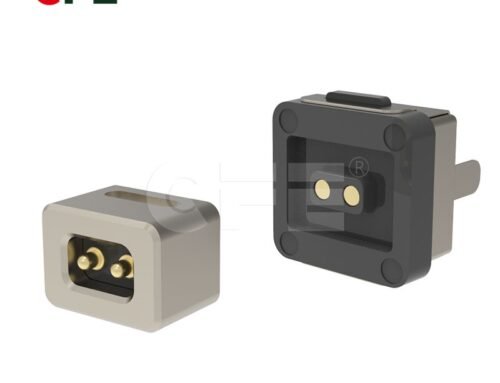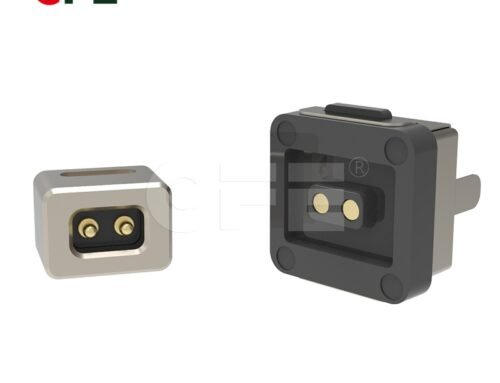Introduction: The Unsung Heroes of Modern Electronics
In the fast-paced realm of electronic engineering, every component matters, especially those that enable connectivity. Among the most overlooked but essential components are custom pogo pins. Though small, these spring-loaded connectors offer high reliability, durability, and performance, making them indispensable in today’s devices.
Whether you’re designing wearables, testing prototypes, or building advanced communication modules, understanding custom pogo pins can drastically elevate your project. Let’s dive into what makes them such game-changers.

2
What Are Pogo Pins?
Simply put, pogo pins are spring-loaded electrical connectors. They’re widely used to establish temporary but consistent electrical contact between two surfaces. You’ll often find them in docking stations, battery charging ports, and PCB testing setups.
Components of a Pogo Pin:
-
Plunger (Tip): Makes contact with the mating surface
-
Barrel (Housing): Encases the spring and maintains the structure
-
Spring: Applies pressure to ensure a stable connection
When compressed, the spring inside allows the plunger to create firm electrical contact. This design allows pogo pins to perform reliably across tens of thousands of cycles.
Why Choose Custom Pogo Pins?
1. Outstanding Durability
Custom pogo pins are engineered for longevity. Many models withstand over 100,000 mating cycles, making them ideal for frequent-use devices like test jigs or docking stations.
2. Compact Form Factor
With electronics growing smaller, space-saving components are vital. Pogo pins provide efficient contact within tight spaces—perfect for wearables, mobile devices, and compact sensors.
3. Versatile Integration
Thanks to their design, pogo pins can be used in surface-mount (SMT) or through-hole (THT) applications. This flexibility makes them easy to incorporate into almost any PCB layout.
4. Superior Signal Transmission
Low contact resistance ensures reliable signal flow—a must for high-speed or high-frequency applications like communication modules and data transfer systems.
5. High Degree of Customization
You can tailor pogo pins to match your design’s requirements. Customizations include:
-
Length and spring force
-
Tip shape and material
-
Plating (e.g., gold for high conductivity)
-
Barrel and housing dimensions
Applications of Custom Pogo Pins
Because of their reliability and adaptability, pogo pins are used in a wide array of industries:
⚙️ Consumer Electronics
Smartphones, tablets, Bluetooth headsets, and docking stations rely on pogo pins for charging and data connections.
❤️ Medical Devices
Custom pogo pins help ensure safe and consistent connectivity in wearable health monitors, diagnostic kits, and portable medical tools.
🚗 Automotive Systems
Infotainment units, sensor arrays, and control modules often utilize pogo pins to support robust, vibration-resistant connections.
🏭 Industrial Equipment
Used in robotic interfaces, industrial machinery, and automated testing systems, pogo pins offer the mechanical resilience needed for harsh environments.
✈️ Military & Aerospace
Due to their high durability and precision, pogo pins are preferred in mission-critical systems that demand reliability under extreme conditions.
How to Choose the Right Custom Pogo Pin
Selecting the appropriate pogo pin requires attention to a few critical aspects:
✔️ Contact Force
Choose the right spring force for your use case. For rugged environments, stronger spring force ensures a tighter grip. In contrast, delicate electronics may benefit from lighter contact.
✔️ Plating Material
Gold-plated pins are commonly used for their corrosion resistance and electrical conductivity, particularly in mission-critical applications.
✔️ Travel Distance
Determine how far the pin must compress to maintain a reliable electrical connection without applying too much force.
✔️ Environmental Conditions
Consider variables like temperature range, humidity, and exposure to dust or chemicals when selecting materials and housing designs.
Design Tips for Seamless Pogo Pin Integration
To maximize performance, designers should follow these essential tips:
🎯 Plan for Tolerances
Align mating components precisely. Even minor misalignments can result in signal loss or connection failure.
🧭 Use Guide Pins
Guide pins help align pogo pins with their counterparts during repeated cycles, reducing wear and misalignment risks.
🧲 Consider Mounting Orientation
Vertical or horizontal installation can influence both accessibility and durability. Choose the configuration that suits your design and user interaction.
🛡️ Choose Protective Housing
Robust and insulating housings can prevent electrical shorts, damage, or corrosion, especially in rugged or outdoor environments.
Future Trends: Pogo Pins in Next-Gen Devices
As electronics evolve toward miniaturization and wireless functionality, pogo pins are playing a more prominent role. Expect to see them in:
-
IoT devices
-
Wireless charging systems
-
Smart wearables
-
Implantable medical technologies
These applications demand connectors that are compact, durable, and precise—a perfect match for custom pogo pins. By investing in custom solutions now, you’re effectively future-proofing your product.
FAQs About Custom Pogo Pins
Q1. What’s the lifespan of a typical pogo pin?
Most high-quality pogo pins last over 100,000 compression cycles, ensuring long-term durability.
Q2. Can pogo pins handle high current?
Yes. When properly configured, pogo pins can handle currents ranging from microamps to several amps.
Q3. Are pogo pins only for testing purposes?
No. While often used in testing, they’re also found in consumer products for power and data connections.
Q4. How are pogo pins installed on a PCB?
Depending on the design, they can be installed using surface-mount (SMT) or through-hole (THT) techniques.
Q5. Can I request custom pogo pin specifications?
Absolutely. Most manufacturers offer custom options for length, spring force, tip shape, plating, and more.
Conclusion: The Small Connector Making a Big Impact
Custom pogo pins may be compact, but their role in electronic design is monumental. With unmatched durability, customization options, and superior signal quality, they enable seamless integration in a broad range of applications—from consumer gadgets to aerospace systems.
By incorporating well-designed pogo pins into your next project, you’ll gain a competitive edge in both performance and reliability. As electronics continue to evolve, these tiny connectors will remain a critical link in bringing your designs to life.



